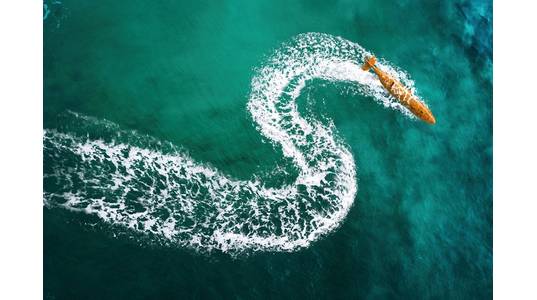
A new autonomous underwater vehicle (AUV) system rolled out today by Norwegian-based Kongsberg Maritime offers significantly enhanced data, positioning and endurance capabilities.
The new HUGIN SUPERIOR AUV system builds upon the existing HUGIN technology platform with some of Kongsberg's latest technologies, including the new HISAS 1032 Dual Receiver Synthetic Aperture Sonar (SAS) which generates approximately 1,000 meters swath at 2.5 knots for SAS imagery, and real aperture and SAS bathymetry, with consistent resolution over the entire swath (typically 5x5 cm in mission imagery). The system also features the EM2040 mk II multibeam.
The vehicle is configurable for diverse applications for a range of commercial, government and naval users. Its data suite features upgraded SAS processing, sidescan sonar imagery, bathymetry, sub-bottom profiler, camera, laser, magnetometer, turbidity and diverse environmental sensors.
The HUGIN SUPERIOR utilizes sophisticated positioning technology, with in mission standard navigation rated twice as effective as other AUV platforms, including current HUGIN models, the manufacturer said.
The new system also comes with a 30 percent increase in energy capacity on board, notably without changing form factor or size. The extra available power can be used to extend mission endurance or maintain current levels of endurance while adding more sensors, increasing productive survey time and contributing to reduced OPEX.
“The new HUGIN SUPERIOR AUV System is available alongside the existing HUGIN and MUNIN AUV Systems, expanding our product portfolio to cover all market segments and performance requirements,” said Richard Mills, Director, Marine Robotics Sales, Kongsberg Maritime. “Our new flagship AUV is designed to deliver superior data, positioning and mission endurance, enabling users to do more with a single asset than ever before.
“Ultimately, it can generate much more data for less operational expenditure, all while offering the best survey class data quality, achieved through advanced techniques such as in-situ navigation processing and data cleaning.”
